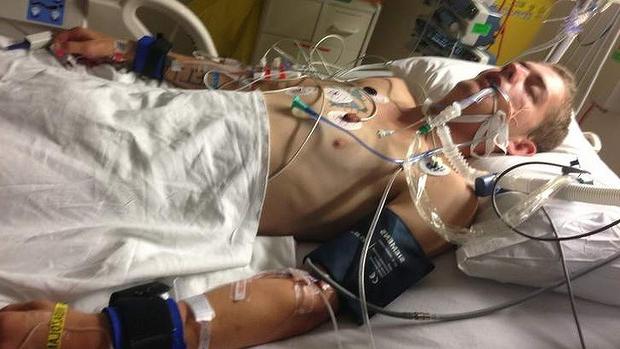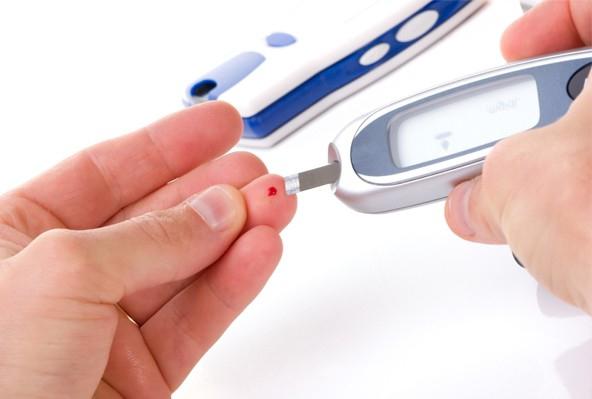“Sweet blood” - the Greek word “glycemia” is literally translated, which means the content of glucose (sugar) in the blood . In a healthy human body, the indicator of glucose (sugar) that enters the body as a carbohydrate and forms in the digestive tract, and then penetrates the blood, is in the range of 3.3 - 5.5 mmol / l, only with such values the person feels normal. As a result of complex biochemical transformations taking place in the cells of the body supplied with blood, glucose breaks down and ATP is formed - adenosine-3-phosphoric acid - a source of unique energy for a living organism. Some organs (the brain, for example) use glucose as energy. If an extremely large amount of carbohydrates is ingested, then glucose will be excreted in large quantities. Excess glucose when interacting with the hormone of the pancreas is converted to glycogen (polysaccharide), which is stored by the body in the liver and muscles in case of a lack of glucose in the blood. When lowering the concentration of glucose in the blood, glycogen will be broken down to glucose. It will enter the bloodstream, maintaining a high level of glycemia. And if the pancreas is not able to produce insulin in the volume that is necessary for processing the entire volume of excess glucose into glycogen, then all glucose enters the bloodstream, which increases its concentration there, hyperglycemia occurs. It is the cause of coma in diabetes mellitus - a disease in which the pancreas produces either insufficient insulin, or the mechanism of interaction of the hormone insulin and body cells is disturbed.

Types of Diabetes
Liver, adipose tissue and muscle cells process glucose only when interacting with insulin. These organs are called insulin-dependent. Other organs - non-insulin-independent - do not need insulin in the processing of glucose (brain for example). If the pancreas is not able to produce insulin in the required amount, then the first type of diabetes develops in the body - insulin-dependent. In the event that the coherence of the interaction of insulin and cells for glucose processing is disrupted, diabetes mellitus of the second type occurs - non-insulin-dependent. For both types of diabetes, the accumulation of glucose in the blood is higher than the limit level, and the body cells, except for those organs that are independent of insulin, experience energy hunger - they do not receive the main source of energy - glucose.

Causes of the disease
Type 1 diabetes begins in childhood or develops in adolescence or youth. The reason for such an early disease lies in the hereditary predisposition of the body and the simultaneous exposure to unfavorable factors - stress, viral infections, malnutrition, lack of vitamins and minerals.
Type 2 diabetes is the lot of adults and the elderly. The reasons are heredity, obesity and atherosclerosis, hypertension.
Diet food
A diet for both types of diabetes plays a crucial role. The diet of a diabetic should ideally be 20% protein, 30% fat (better than vegetable origin), 50% “long-playing” carbohydrates, that is, those that are not easily absorbed by the body. Food should be saturated with vitamins and minerals, especially for vitamins C, A, E, group B, and of the minerals in the first place - iodine, iron, zinc, manganese. It is necessary to replace one (harmful for diabetic) products with others - safe and useful. And for this you need to clearly know what you can and cannot eat with diabetes. The daily diet must be calculated with the calculation of calories.

What can not be eaten with diabetes?
For normal carbohydrate metabolism to help the body, a diabetic suffering from any type of disease should exclude easily digestible carbohydrates from the diet. What can not be eaten with type 1 diabetes? This is sugar, pure glucose and all the culinary products in the recipe of which these products are found: ice cream, condensed sweet milk, coffee and cocoa, jam, syrups, jam, confiture, jam, marmalade, sweet drinks, honey, any confectionery , baking. Sweeteners are given sweeteners, which are selected depending on the heat treatment of the dish. What vegetables and fruits for diabetes are consumed in diabetes with the obligatory calculation of calories in the daily diet? Those in 100 grams of which the carbohydrate content is more than 10 g. These are vegetables: potatoes, green peas, beets, kohlrabi cabbage, parsnips, parsley, carrots, beans, onions. From fruits: bananas, grapes, pineapples, persimmons, figs, dates, apricots, pomegranates, cherries and cherries, peaches, pears, mulberries, plums, mountain ash red and aronia. Berries: strawberries and strawberries, raspberries, blueberries, currants (any), rose hips. What can not be eaten with type 2 diabetes? Products and culinary products that are prohibited in type 1 diabetes. But, in addition, it is necessary to observe additional restrictions aimed at anti-sclerotic assistance to the body. It is necessary to include fiber, bran bread, more low-calorie vegetables in the diet, and reduce the daily calorie intake - especially when overweight.